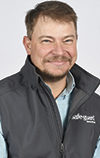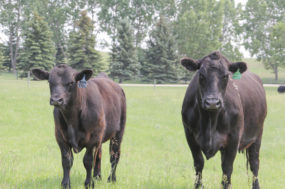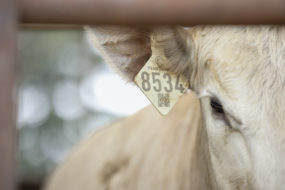Have a goal in mind
• Marketing calves: Are you selling feeder calves, replacement heifers, replacement bulls or genetics? The end product determines the type of bull an operation needs and the pressures that will be applied to that bull.
• Servicing requirements: How many cows will be exposed to this bull? The bull-to-cow ratio needs to be realistic. Older bulls are usually able to successfully breed more cows than a young, inexperienced bull.
• Area to be covered during breeding season: How much land is this bull expected to cover to breed his cows? Bulls with questionable conformation should not be expected to travel long distances.
• EPDs: EPDs can help a producer select a bull that has the desired traits to improve the performance of the herd and reach the goals of the operation.
Timing of bull purchase
• Relative to breeding season: It is best to purchase replacement bulls shortly after the breeding season. This gives the new bull time to acclimate to his new environment. It also allows for a quarantine period in order to minimize the introduction of new diseases into the herd. The minimum is 60 days before the start of the breeding season.
• Age of the bull: Young bulls often need time to mature or progress through puberty before being turned out with cows. This needs to be accounted for when considering a bull for purchase.
What to consider during the visual examination and inspection of bull prospects
• Body condition: Over-conditioned bulls develop excess fat in the neck of the scrotum. Fat in this area acts as an insulator and negatively affects the thermoregulation of the testicles. This results in poor quality sperm production. In time, bulls often lose this scrotal fat, once they lose some condition.
• Scrotum: Carefully inspect the size, shape and symmetry of the scrotum. This is one of the most critical aspects of bull selection. Total scrotal size should be based on the combined size of each testicle. Excessively large and rounded scrotums could indicate accumulation of fluid or blood in the scrotum or a scrotal hernia. Moreover, the total scrotal size should not be too small for the bull’s age and breed. Scrotal size has a direct influence on heifer offspring reproductive development. Heifers from a small scrotum bull will have delayed puberty and decreased productivity. Also, scrotal size is directly proportional to quality and quantity of sperm production.
• Prepuce or sheath: Bulls with excessively long sheaths are predisposed to preputial problems, such as lacerations and prolapses.
• Conformation: Pay close attention to the bull’s leg structure and hoof quality. Post-legged bulls often do not last. The excessive force put on the hocks and stifles eventually leads to pain and inability to breed. Bulls with bad feet do not travel well and have difficulty breeding due to recurring pain.
• Eyes: Blind bulls do not breed well. White spots or cloudy eyes could indicate a current or past infection. These can be caused by viruses that should not be introduced into your herd. Try to find out if the eye lesion is due to an injury or infection.
• Overall health: Watch how the bull is breathing compared with others in the pen. Rapid or open-mouth breathing could indicate respiratory disease or heat intolerance. Also, look for nasal or ocular discharges, as well as the quality of hair coat and body condition, keeping in mind the time of year. Additionally, there should be no evidence of ringworm, warts or other skin diseases.
Breeding soundness exam (BSE)
A BSE is just as the name implies – an evaluation of a bull’s ability to successfully locate, reach and breed cows in heat. A satisfactory BSE should be required of any herd sire. It is not a “fertility test” because a complete ejaculate is not collected and evaluated for fertility criteria. Testing for fertility requires extensive testing that is seldom warranted. Instead, a BSE evaluates a bull’s structure, soundness, reproductive organs and overall semen quality. Comparing this information to established standards and the goals of the operation allows the veterinarian to make sound recommendations regarding the breeding potential of this animal. With this said, only evaluating sperm motility under the microscope does not provide enough information for a veterinarian to make appropriate recommendations.
All bulls should have a BSE at least 60 days prior to turnout to allow time for a retest, if necessary, or time for the producer to locate a replacement bull. This is one of the most important management tools a producer can use to improve the profitability and performance of his herd. ![]()
A. Jacques Fuselier, DVM, is with cattle technical services at Merck Animal Health. Email A. Jacques Fuselier.
PHOTO: Customers assessing a few bulls at the Pinigar Limousin sale in Springfield, Missouri. Staff photo.








